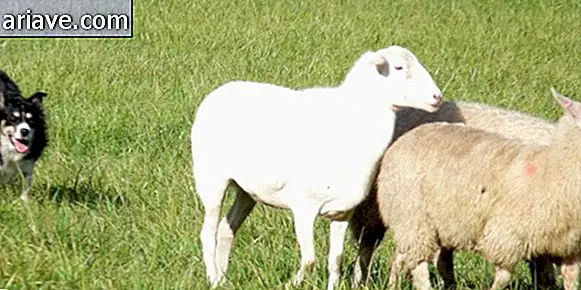4 types of mummies that have been discovered worldwide
Normally, when we think of mummies, we almost always remember the bodies preserved for thousands of years by the ancient Egyptians, which are undoubtedly the most famous in the world. However, as National Geographic's Mollie Bloudoff-Indelicato has pointed out, several methods of mummification have been employed throughout history, and you will then get to know four of them a little better:
1 - Chinchorro Culture
Chinchorro Culture was a group of fishermen who occupied the coastal region of the Atacama Desert between Peru and Chile between 7000 and 1500 BC, and their mummies - which are even older than the Egyptians - are examples oldest in the world of bodies that were deliberately prepared to be preserved.

According to Mollie, to create the mummies, the processors first cut off the heads, arms, and legs of the corpses, and removed the organs and flesh from the bodies. The brain was also removed through a hole in the skull, and the skin was carefully separated to later be "dressed" again. Then the dead were filled with charcoal so that they could be dehydrated.

After that, the bodies were rebuilt using sticks and animal hair and covered with a layer of white ashes. Finally, the mummifiers would attach some hair to the mummies' heads and apply manganese over their bodies to make them completely black.
2 - The Papua New Guinea Mummies
As you may know, there is still a tribe in Papua New Guinea that practices cannibalism. However, despite being a much less bloody custom, there are also groups in the country that even today mummify their dead - instead of devouring them. For this, the bodies are opened and placed in a cabin where they are smoked until their internal organs and skin become completely dehydrated.

The corpses are then covered with a layer of red clay - which helps preserve the integrity of the bodies - and placed in a kind of forest sanctuary. If you're curious about how the process is done, the video below, produced by National Geographic, gives a glimpse of what it looks like:
But the trajectory of the deceased does not end with the completion of the mummification process! They are brought back to the tribes during important celebrations, and relatives often visit them in the jungle for advice.
3 - Swamp Bodies
Swamp Bodies (monsters) are mummies known by the name "Bog Bodies" that were discovered in several European countries, such as Ireland, Denmark and England. Analysis revealed that the corpses were dumped in the marshes, and the harsh environment of the waters - which are low in oxygen - prevented the proliferation of bacteria that normally act on decomposition.

As a result, the bodies are in an impressive state of preservation, especially considering they are between 400 and 4, 000 years old! One of the most famous is what you can see in the image below, which was found in 1950 in Denmark, is no less than 2, 300 years old and is named Tollund Man:

The mummy above was found with a leather rope around its neck, and archaeologists suspect the man was hanged as a form of sacrifice. On the other hand, scientists believe the bodies discovered in Ireland belonged to former monarchs who were violently murdered for failing to protect their subjects from hunger or disease. See more images clicked by National Geographic in the following gallery:






4 - Automumification
We here at Mega Curious have already talked briefly about self-humiliation, which consisted of a ritual practiced by Buddhist monks from Japan, China, and India. In fact, the process can be classified as a kind of prolonged suicide, as through it the religious took their lives voluntarily and took a long time to complete the procedure.

To begin with, the monks ate only nuts and seeds for three years and then fed on roots and tree bark for another three years. The goal of the restricted diet was to eliminate all body fat and thus leave less “food” for the microorganisms responsible for human decomposition.
After (about) six years of restricted diet, the monks then consumed a toxic tea that caused the vomiting - so that they eliminated body fluids. In addition, the poison of the drink also served to prevent the action of bacteria after death, but just before they died, the religious were placed in tombs with only a small air passage and a bell.
The monks adopted the lotus position inside the graves and rang the bell daily to warn that they were still alive. Finally, when the signal ceased, the air gap was closed and the tomb sealed. According to Mollie, historical records indicate that this practice has existed since at least the 12th century, and at least 24 religious bodies have been found to submit to it.
Bonus
The classic Egyptian mummies
There's no way to talk about mummies and different mummification processes without including the classic Egyptians in the list, right? According to Mollie, the process practiced in Ancient Egypt usually lasted 70 days, beginning with the liquefaction of the brain. Then the priests removed all organs from the body - except the heart, which was considered an integral part of the being and center of intelligence - and kept them in pots.

The next step involved dehydrating the body with a mineral called natron and then wrapping the corpse with feet upon feet of linen. After being completely mummified, the body was stored inside one or more sarcophagi and placed inside the tomb - with everything the deceased would need in the afterlife.
Would you like to be mummified? Comment on the Mega Curious Forum











